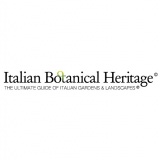
 Italian Botanical Heritage
Italian Botanical Heritage
Italian gardens and parks: Serre Regional Nature Park
- WTI Magazine #174 Apr 20, 2024
-

 Italian Botanical Heritage
Italian Botanical Heritage
The Regional Natural Parco delle Serre covers an area of 17,687 hectares (211,534 square yards) and also includes the area of Lake Angitola. Slopes and hills covered with forests characterize the landscape. Between the mountains, the park encloses vast depressions, including the plain of Lacina and the dales of Serra San Bruno, Chiaravalle, Mongiana and Fabrizia.
In the park there are four areas of particular botanical and naturalistic: the Plain of Lacina, humid mountain area in which rare species survive; Bosco di Santa Maria, which contains, among gigantic fir trees, the church of Santa Maria del Bosco; Oasis lake Angitola, man created in 1966; the Stilo-Archiforo forest, testimony of the original wooded landscape of the Serre.
The geological nature of the Park Serre is mainly crystalline: granite, porphyry, serpentine, quartz diorite are visible; flora, fauna and bird life are very rich.
Flora and fauna
Among the plant species, the predominant are chestnut (Castanea sativa), the Corsican pine (Pinus nigra), the common alder (Alnus glutinosa), alder (Alnus cordata) silver fir (Abies alba), beech (Fagus sylvatica) and holm oak (Quercus ilex), the white poplar (Populus alba), aspen (Populus tremula), the yew (Taxus baccata), white willow (Salix alba), field maple (Acer country) and robina (Robina pseudoacacia). The most relevant animal species is the wolf; among other mammals we can find porcupines, martens, polecats, dormice, dormice, wild cat, marten, weasel, dormouse, the squirrel.
In the park you may want to visit: 1) The Abbey called Certosa di Serra San Bruno, within walking distance from the village of the same name in about 1 hour and 30 minutes; 2) the Sanctuary of Santa Maria del Bosco, which was rebuilt after the earthquake of 1783, on the ruins of the church built by St. Bruno, a place of prayer for the monks.
To admire is also the giant silver fir (Abies alba) that surrounds the area, included in the National Book of the Seed Woods, maintained by the State Forestry Department, for their important genetic qualities.